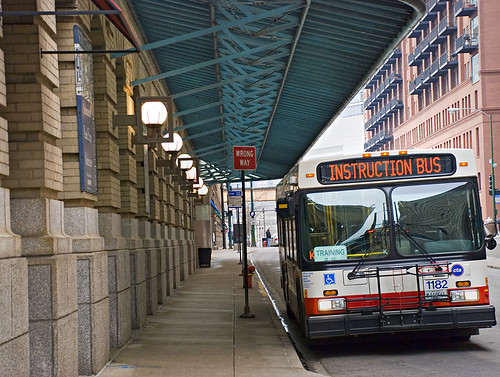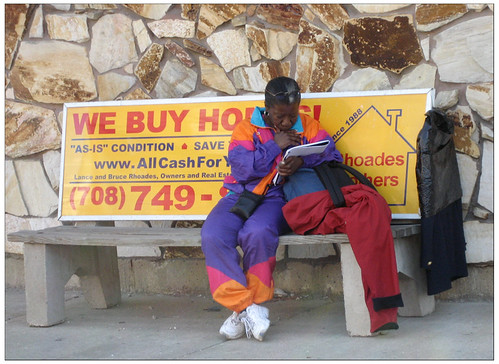
The original article didn't mention the exact part of North Halsted affected, today John Hilkevitch confirms what the original article's tiny graphic seemed to indicate: Halsted from Lake Street to North Avenue will be one of the lanes.
In theory, greater attention to public transit is a spectacular thing. I'm all for it actually, but this particular stretch of Halsted is the part of the city I see the most. Sort of hard to take alternative routes (there are trains, rivers, one-way streets, and interstates that block the grid in this area), so this may turn out to be a giant headache.It amounts to a declaration of war on automobiles, the critics say. They imply it's some sort of conspiracy to make today's very bad traffic even worse, so the only option for motorists would be to flee to public transportation or drive to work at 3 a.m. in their pajamas.
As reported in weekend editions of the Tribune, CTA bus-only lanes will be built on two North Side streets and two South Side streets for routes serving downtown under the ambitious plan to test the bus version of rapid transit in Chicago.
The strategy centers on slashing travel times on buses by 50 percent and luring drivers out of their cars.
The bus lanes will be built on Chicago Avenue from California Avenue to Fairbanks Court; on Halsted Street from Lake Street to North Avenue; on 79th Street from State Street to Ashland Avenue; and on Jeffery Boulevard from 87th to 67th Streets.
The lanes would be restricted during peak travel periods to buses only and be used in the inbound direction in the morning and outbound during the evening rush. The lanes would be open to all vehicles during non-rush periods.
[From Chicago roads may undergo bumpy transition to bus-only lanes -- -- chicagotribune.com]
 Waiting for the bus, Halsted and Kinzie
Waiting for the bus, Halsted and KinzieThis part of the plan sounds interesting:
Attention to operational details and technology are vital to making the bus rapid transit plan work. Bus stops will be staggered at roughly one-half mile intervals and traffic signals will extend green lights for buses.
[snip]
Meanwhile, the CTA plans to construct bus rapid-transit stations with turnstile fare-collection equipment at key points along the bus lines to promote faster boarding of passengers. The stations will include waiting areas with heaters and electronic message boards reporting the arrival time of the next bus.
In the longer term, the bus stations would be augmented with "public bicycles" that commuters could use for free or a small fee, as well as the option to rent cars on an hourly basis.
The CTA must begin operating the express buses by 2010, under the funding agreement. The project would start with about 10 miles of bus-only lanes and later expand to more than 100 miles. The CTA will use about $37 million of the $153 million federal grant to buy double-long, hybrid buses that emit less pollution than traditional diesel-powered buses.
Expected benefits of the bus-only lanes include lower emissions of carbon dioxide gases because of the express buses stopping less often.
